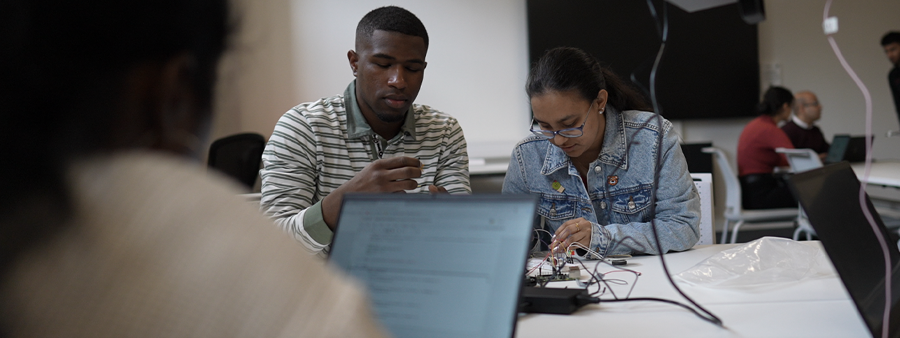
Smart Translation Camera
Team Sign Genie
Sign Genie has worked on creating a product to break down barriers faced by hard-of-hearing individuals. Their Smart Translation Camera aims to give accurate sign-language translations into speech to promote inclusivity for all.
Give us a brief overview of your project
SignGenie is a product that aims to break down communication barriers faced by deaf and hard-of-hearing individuals. Simply, our prototype will be a tiny camera that can sit on someone's shirt button, on someone's glasses, or on a walking stick, for example. The camera will convert the images to real-time and accurate sign language translations into speech and text, promoting inclusivity and accessibility. To ensure that the product remains relevant and up to date, SignGenie will continuously gather feedback from its users. It also aims to establish partnerships with organisations and institutions that share its vision for inclusivity and accessibility for all.
What made you want to develop this idea?
We wanted to develop a concept that reaches people - there have been people in some of our lives who have hearing disabilities. One of our teammate's family members is hard of hearing, and there are only two people that can communicate with them due to knowing sign language. This is very frustrating for both of them, and they wish to have the freedom and accessibility to communicate more. We understand how much personality and personability are lost through a lack of understanding when trying to communicate, and we believe everyone should be able to have meaningful interactions.
Why is there a need for what you’re creating
The product can be used in various industries, such as education, healthcare, and customer service, where communication is crucial. SignGenie plans to expand its offerings to include voice recognition, personalized settings, and regional dialect support. We believe there is a need within this issue to reduce inequalities by bridging the gap between lost communication due to hearing impairments.
Can you explain the kind of equipment you are using, and how you are creating the physical product?
For the prototype, we are using Raspberry Pi for the camera and Python to code data sets with 100 images that we have personally captured. We are matching them with the correct translation.
Where do you envision the future of this project?
We are starting with only a few words, but in the future, we hope to translate other nuances, such as facial expressions or tone of voice, for more authentic communication. We are trying to change our society and make life easier for those who currently cannot access the same things that a person with hearing can access.
What are you looking forward to about Innovation Festival?
We want to connect with industry professionals at the festival to get support to push our idea. We need access to the funding and tools to make this a reality, so we would love to present our concept to as many people as possible.